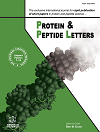
Full text loading...

The present study aims to compare the monotherapy of diosmetin and 5-hydroxydecanoate (5-HD) against the therapeutic effect of their combination therapy in the unilaterally injected rotenone-induced neurotoxicity in the male rats. Motor deficits accompany Parkinson's Disease (PD), while Bioflavonoids like diosmetin, which are antioxidants and anti-inflammatories, protect against neurotoxins. Moreover, mitochondrial dysfunction contributes to PD. The mitochondrial ATP-sensitive potassium channel [mito(KATP)] regulates reactive species and 5-HD, meaning decreasing it may lessen mitochondrial injury. To evaluate the effect of diosmetin, alone and in combination with 5-HD, on Oxidative Stress (OS) markers, mitochondrial function, and dopaminergic preservation in the SNpc.
Male Wistar rats were divided into seven groups, including normal control, sham, rotenone-treated, and treatment groups receiving diosmetin, 5-HD, their combination, or selegiline as a standard drug. Biochemical assays were conducted to assess OS markers, mitochondrial complex-I activity, and dopaminergic neuroprotection. Behavioral tests were performed to evaluate motor deficits.
Rotenone administration significantly increased OS, impaired mitochondrial complex-I activity, and reduced motor coordination. Diosmetin treatment significantly reverses the effects of rotenone. Combined treatment with diosmetin and 5-HD showed enhanced neuroprotective effects compared to individual treatments.
This study demonstrates that both diosmetin and 5-HD monotherapies alleviate rotenone-induced behavioral impairments in the experimental rats. Additionally, the individual treatment of diosmetin and 5-HD reduces dopaminergic toxicity induced by rotenone. At the sub-cellular level, diosmetin and 5-HD monotherapies counteract rotenone’s impact on antioxidant markers, DA metabolites, and mitochondrial function in the SNpc region of the brain. Notably, combining diosmetin and 5-HD yielded superior therapeutic effects on rotenone-induced behavioral and molecular changes compared to either monotherapy alone. These findings suggest that diosmetin and 5-HD may offer a promising alternative for PD management.
Diosmetin exhibits potent antioxidant and neuroprotective properties against rotenone-induced PD-like pathology. The combination of diosmetin and 5-HD offers a synergistic therapeutic potential, suggesting a promising approach for managing oxidative stress and mitochondrial dysfunction in PD.

Article metrics loading...

Full text loading...
References


Data & Media loading...